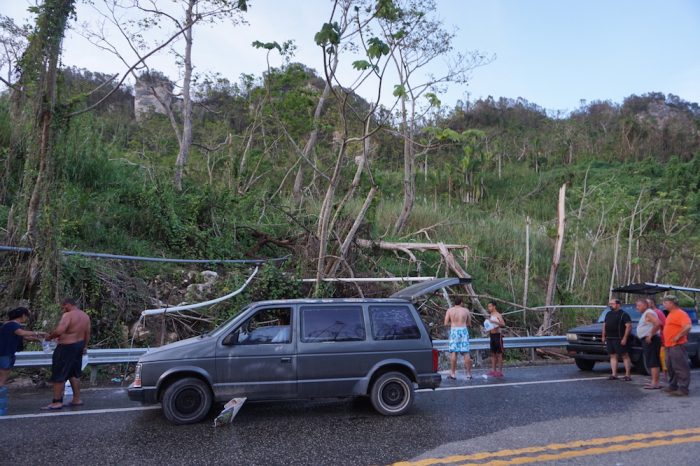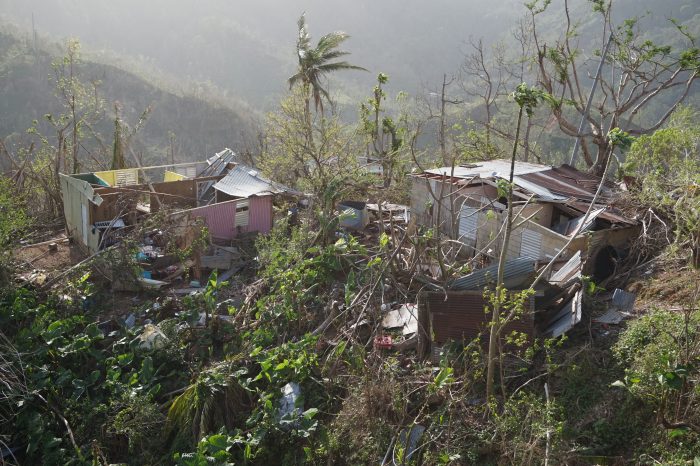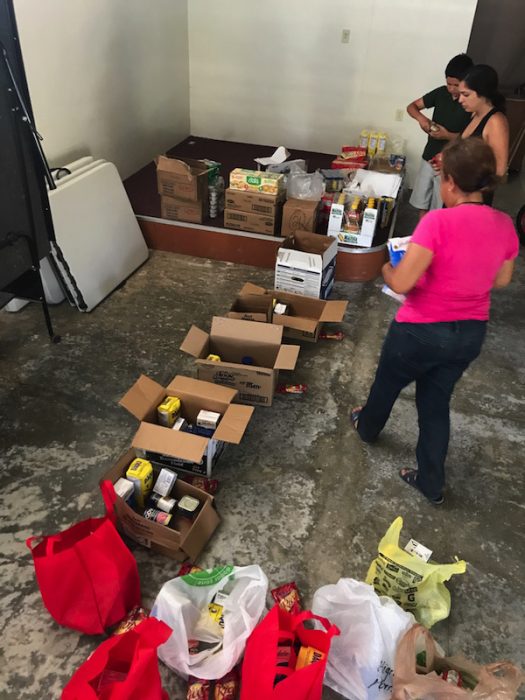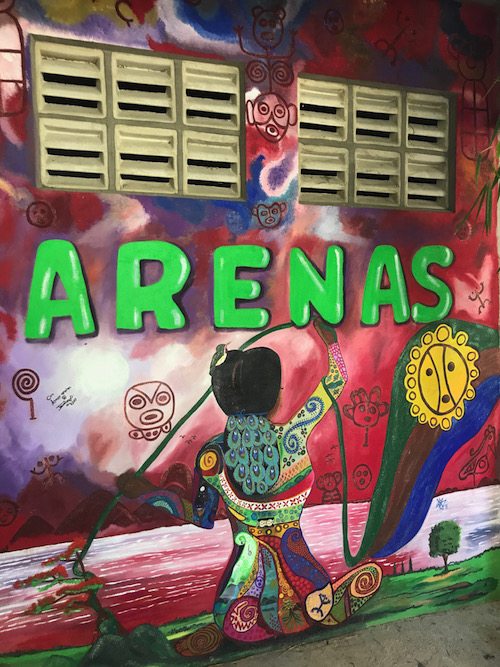UTUADO, PUERTO RICO — A full month after Hurricane María’s landfall, everyone still seemed focused on one thing: water.
As I drove into the La Capilla sector of the Arenas neighborhood in the central mountain town of Utuado, next to every man, woman and child was a bucket, a plastic jug or some other container to gather water from whatever source they could find. And yet, no one was complaining or waiting for a handout. Their story is not one of despair and dependence—it is one of hope and agency born of a strong sense of community and self-reliance.
On October 20, I headed out from San Juan to see for myself the struggle of rural residents in the aftermath of Puerto Rico’s most catastrophic natural disaster in close to a century. I was also delivering water, food and other supplies that a group of friends had pitched in to buy. When I arrived, I heard a now familiar story: aside from sporadic visits by private individuals and groups, the government had not yet made an appearance in this remote and isolated village of about 250 homes. Just FEMA had shown up, weeks after the storm, and then only to deliver what residents described as “snacks.”
Still, these were not bitter people complaining about an absent government. Rather, they were proud of what they had achieved on their own to reestablish a sense of normalcy: narrow one-lane roads had been cleared by neighbors, a bridge that had been swept away by the storm, cutting off dozens of homes, had been rebuilt with dirt, on numerous occasions, largely by three families who owned heavy equipment, and a system of above ground pipes delivered rain and spring water to some homes for basic hygiene.
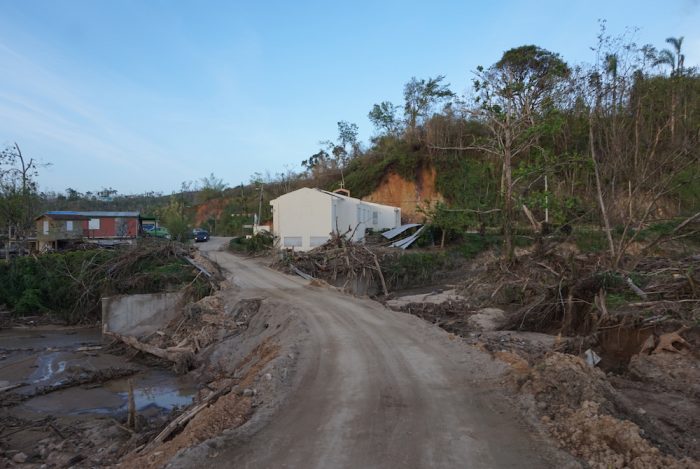

The bridge, rebuilt numerous times by locals. The structure on the right is the community’s Catholic chapel—it gives the sector its name, La Capilla. The church building lost its roof in the storm. (Photo by Armando Valdés Prieto)
Two community leaders I spoke with —José “Pepe” González and Miriam Lugo— expressed doubts about the Puerto Rico Electric Power Authority’s schedule for repowering the island, particularly when it comes to their own homes However, no anger was evident in their voices.
“I suspect it will be in 2018”, said González, a retired math teacher.
This attitude reflects the community’s willingness to strike out on its own. These are not folks sitting idly by waiting for the federal or state governments to come to their aid. They have no expectation that government will come save them. Nonetheless, assistance is still needed, if only to provide them with the tools and resources to rebuild.
Many homes were lost. Doña María, an elderly resident in one of the more elevated parts of the neighborhood, lost her own house and one of her sons’. She’s now living with relatives in cramped quarters. Very steep roads, which although cleared are barely dirt paths in many areas, make it difficult for her to leave her home to buy food or get water.
Even if she could make it to one of two nearby supermarkets, only one is now accepting food stamps —it was able to reconnect its systems to process benefits on October 16, according to residents— a common problem throughout the island. A mere 39% of businesses that normally accept food stamps are actually processing transactions, according to government numbers current as of October 22.
Some residents, the lucky few, have actually taken to parking one of their vehicles on the other side of the makeshift bridge that, on the day I visited, had withstood the weather for going on five days. If heavy rains return and it is again washed away, they can walk across and still be able to drive into town with their spare vehicle. Of course, this is not a real possibility for the poorest, the elderly and the most vulnerable. They depend on the kindness and solidarity of their neighbors.
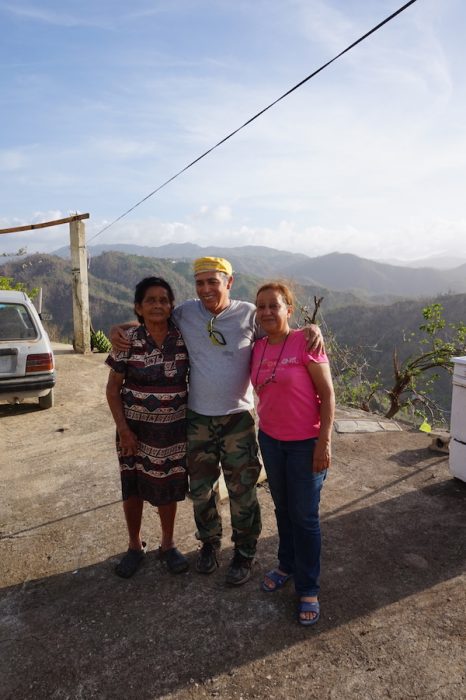

From left, Doña María, and community leaders José “Pepe” González and Miriam Lugo. (Photo by Armando Valdés Prieto)
Point in fact, the supplies I delivered were set aside in a local community center run by Lugo and others. Most would be delivered later to the neediest families. Relying on local leaders is what government should be doing to distribute aid in the most equitable and far-reaching form. Relying on politicians has not only proven ineffective —complaints abound as to sectors that have not received any aid— but also fraught with potential for partisan patronage.
What’s needed most is a helping hand for individuals in communities, like Arenas, that can rally their neighbors to regain what they lost in the storm and build more resiliency into their infrastructure and local systems. Given supplies, the community could rebuild its roads and some homes. Given filtration systems, water —abundant in the area— could be made potable for human consumption. Solar panels, wind turbines and batteries could provide for a local energy grid to complement the Authority’s.
Recovery, and a new and stronger Puerto Rico are within our reach if we trust in our own ability to lift ourselves up by our bootstraps, focus on the local level and deposit our confidence in proven community leaders who aren’t waiting around for anyone.
***
Armando A. Valdés Prieto is a lawyer and political consultant, and a former director of the Commonwealth of Puerto Rico’s Office of Management and Budget. He lives in San Juan with his wife, two cats and a dog. He tweets from @armandovaldes.



